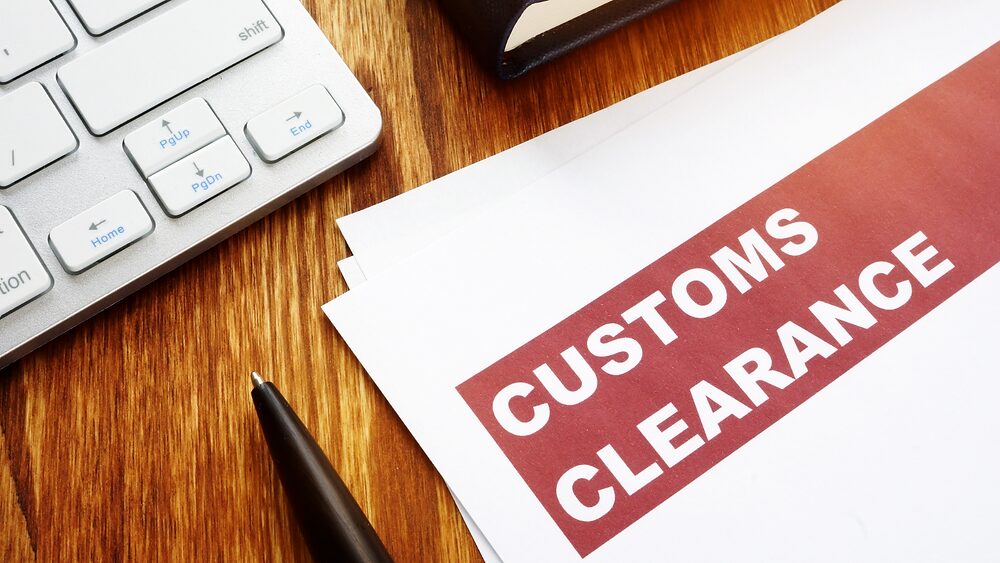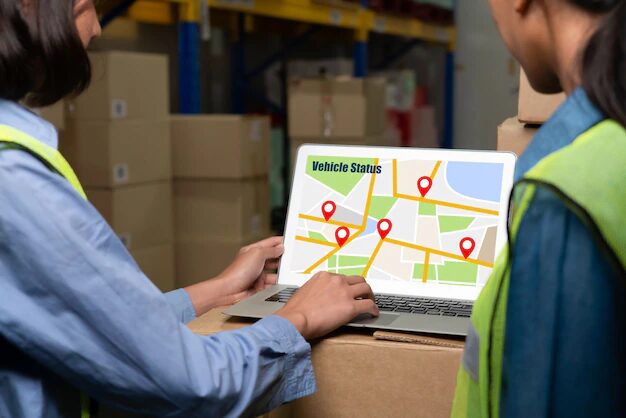The allure of Amazon FBA is undeniable. It empowers sellers to tap into a massive customer base while Amazon handles the heavy lifting – storage, packaging, and shipping. But for those looking to source products in China and leverage FBA in the USA, navigating the international logistics landscape can feel daunting. Fear not, intrepid entrepreneur! This comprehensive guide will equip you with the knowledge and strategies to conquer the China-USA route with your Amazon FBA business.
Unveiling the Advantages of Amazon FBA for China-USA Shipping

There’s a reason Amazon FBA reigns supreme in the world of e-commerce fulfillment. Here’s a glimpse into the treasure trove of benefits it offers for sellers shipping from China to the USA:
- Effortless Fulfillment: Imagine never having to worry about storing inventory, picking and packing orders, or dealing with customer inquiries about shipping. FBA takes care of everything, freeing you to focus on product sourcing, marketing, and growing your business.
- Enhanced Customer Satisfaction: FBA boasts a vast network of fulfillment centers strategically located across the USA. This translates to lightning-fast delivery times, often with Prime two-day shipping, significantly boosting customer satisfaction and loyalty.
- Reduced Shipping Costs: Amazon negotiates bulk shipping rates with major carriers, resulting in significant cost savings you can pass on to your customers through competitive pricing.
- Scalability Made Simple: As your business flourishes, FBA seamlessly scales with you. No need to invest in additional storage space or personnel. Simply increase your inventory levels at Amazon’s fulfillment centers, and they’ll handle the surge effortlessly.
- Increased Visibility and Credibility: FBA products automatically qualify for Amazon Prime, granting them a coveted badge of trust and boosting their visibility in search results. This can significantly elevate your conversion rates.
Demystifying the China-USA Shipping Process: A Step-by-Step Breakdown
Now that you’re armed with the knowledge of FBA’s advantages, let’s delve into the nitty-gritty of shipping your products from China to Amazon fulfillment centers in the USA.
- Product Selection and Sourcing: Conduct thorough market research to identify profitable products that align with your brand and FBA’s size and weight restrictions. Locate reliable suppliers in China through platforms like Alibaba or Global Sources. Meticulously scrutinize quality control measures before finalizing a sourcing partner.
- Inventory Planning and Preparation: Precisely forecast demand to prevent stockouts or excessive inventory that incurs storage fees. Collaborate with your supplier on labeling and packaging requirements to ensure compliance with Amazon’s FBA guidelines.
- Freight Forwarder Selection: A reputable freight forwarder simplifies the complexities of international shipping. They’ll handle customs clearance, documentation, and liaise with carriers to ensure your shipment arrives smoothly. Look for a forwarder experienced in Amazon FBA and familiar with China-USA trade regulations.
- Shipping Cost Calculation: Freight forwarders can provide quotes based on factors like shipment weight, dimensions, and chosen shipping method (air freight for speedier delivery or ocean freight for cost-effectiveness). Be sure to factor in additional costs like customs duties and taxes.
- Customs Clearance: Navigating customs can be intricate. Partner with a freight forwarder who can guide you through the necessary documentation, including commercial invoices, packing lists, and certificates of origin. Ensure accurate product descriptions and HS tariff codes to avoid delays or penalties.
- Delivery to Amazon FBA Centers: Once your shipment clears customs, the freight forwarder will deliver it to the designated Amazon fulfillment center. FBA will then meticulously inspect and categorize your products before making them available for sale on Amazon.
Selecting the Perfect Freight Forwarder: A Skillful Matchmaker for Your FBA Journey

The right freight forwarder acts as a bridge connecting your Chinese supplier and Amazon’s fulfillment centers. Here’s how to find the ideal partner:
- Experience with Amazon FBA: Look for a forwarder well-versed in FBA’s requirements, including labeling, packaging, and customs clearance procedures specific to Amazon.
- Competitive Rates and Transparency: Compare quotes from several forwarders, ensuring they offer transparent pricing that encompasses all fees. Negotiate bulk discounts if you plan on frequent shipments.
- Communication and Customer Service: Choose a forwarder known for excellent communication, providing timely updates and readily addressing any concerns you may have throughout the shipping process.
- Reputation and Reliability: Research the forwarder’s online reviews and industry reputation. Opt for an established company with a proven track record of successful China-USA FBA shipments.
- Origin Charges: These encompass costs incurred at the origin point (China) such as inland transportation from your supplier’s factory to the port of departure, export customs clearance fees, and any documentation charges.
- Ocean Freight or Air Freight: The chosen shipping method significantly impacts cost. Air freight offers faster delivery but comes at a premium. Ocean freight is more cost-effective but takes longer.
- Destination Charges: Upon arrival in the USA, expect to incur destination charges like import duties and taxes (calculated based on the product’s value and HS tariff code), customs clearance fees, and inland transportation to the designated Amazon fulfillment center.
- Amazon FBA Fees: Amazon charges fulfillment fees per unit based on product size, weight, and storage time. There are also additional fees for optional services like removal orders or labeling.
Pro Tip: Utilize online freight cost calculators offered by reputable freight forwarders to estimate your total shipping costs before finalizing your sourcing strategy.
Packaging and Labeling Imperatives for FBA Success

Amazon has strict guidelines for packaging and labeling products shipped to their fulfillment centers. Here’s a crash course to ensure your shipment arrives smoothly and avoids delays:
- Durable Packaging: Products must be secured in sturdy, corrugated cardboard boxes that can withstand the rigors of international shipping. Consider additional cushioning materials like bubble wrap or peanuts for fragile items.
- Clear Labeling: Each box must have clear and visible FBA labels with unique identifiers provided by Amazon. These labels contain essential information for Amazon to efficiently receive, store, and distribute your products.
- Product Labels: Ensure all individual products comply with Amazon’s labeling requirements, including product identifiers (UPC, EAN, or ISBN), brand name, and any necessary warnings or safety information.
By adhering to these packaging and labeling standards, you streamline the receiving process at Amazon’s fulfillment centers and minimize the risk of delays or product returns due to non-compliance.
Customs and Import Regulations: Navigating the Gateway Smoothly

Customs clearance can be a potential bottleneck in the shipping process. Here’s how to ensure your shipment sails through customs without a hitch:
- HS Tariff Codes: Accurately identify the HS tariff code for each of your products. This code determines the applicable import duty rate. Incorrect codes can lead to delays and penalties.
- Accurate Documentation: Ensure all necessary documentation, including commercial invoices, packing lists, and certificates of origin, are accurate and complete. Partner with your freight forwarder for guidance on proper documentation.
- Duty and Tax Prepayment: Consider prepaying import duties and taxes to expedite customs clearance. This can be particularly beneficial for high-value shipments.
By understanding and adhering to customs regulations, you can avoid costly delays and ensure your products reach Amazon’s fulfillment centers promptly.
Tips for Ensuring Successful Delivery and Minimizing Delays
Here are some additional pointers to optimize your China-USA FBA shipping process:
- Plan in Advance: Leave ample buffer time for production, shipping, and customs clearance. Unexpected delays can disrupt your launch or sales cycle.
- Communicate Effectively: Maintain clear communication with your supplier, freight forwarder, and Amazon throughout the process. This helps identify and address any potential issues promptly.
- Track Your Shipment: Most freight forwarders offer shipment tracking tools. Regularly monitor your shipment’s progress to anticipate any potential delays.
- Prepare for Inspections: Be prepared for random customs inspections. Ensure all your documentation is readily available to facilitate a smooth inspection process.
By following these tips and remaining proactive, you can significantly minimize delays and ensure your products reach Amazon’s fulfillment centers efficiently.
Mastering the Art of Tracking and Managing Your FBA Shipments

Transparency and control are crucial for running a successful FBA business. Here’s how to stay on top of your shipments:
- Freight Forwarder Tracking: Most forwarders offer real-time shipment tracking tools, allowing you to monitor the progress of your goods from origin to destination.
- Amazon Seller Central: Once your shipment arrives at an Amazon fulfillment center, you can track its status and inventory levels through your Seller Central account. This provides valuable insights into your stock availability and allows you to optimize your inventory management strategy.
By effectively utilizing these tracking tools, you can gain valuable insights into your supply chain, identify potential bottlenecks, and make data-driven decisions to optimize your FBA operations.




